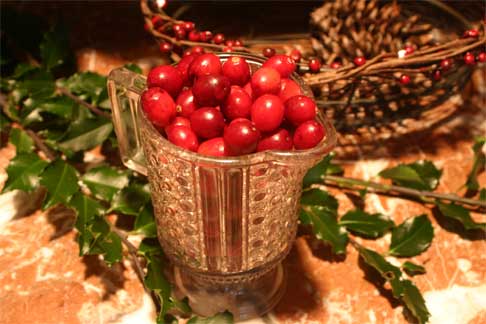
Whether strung as garland, used as table decor or served as a side dish with Christmas dinner, the versatile cranberry had long been part of our holiday traditions.
Americans consume some 400 million pounds of cranberries a year, but demand for the popular berry is international. Today, cranberries are used in thousands of products worldwide, from cereals to salsas. Seven of 10 cranberries sold in the world today come from Ocean Spray, an agricultural cooperative owned by more than 650 cranberry growers in the United States and Canada. The bright red berries are harvested each autumn from farms in Massachusetts, New Jersey, Oregon, Washington, Wisconsin, and part of British Columbia and Quebec. New Jersey ranks third in the nation for production of cranberries Who knew?
Pilgrims learned about the cranberry from American Indians who harvested the berry for food, medicinal purposes, and to make dye for rugs, clothing and blankets. Indians sweetened the tart berry with honey or maple sugar. By mashing it with fat and deer meat, they were also able to create pemmican, a highly nutritional cake that helped them survive long winters when game was scarce.
Contrary to popular belief, historians say that the cranberry was not among the foods consumed by the Pilgrims at the first Thanksgiving, but it did become a staple in the diet of early settlers. Cranberries can be found in recipes dating back to the early 1700s. Known by several different American Indian terms like atoqua, sassamanesh and ibimi, the English word cranberry evolved from “crane berry,” a name bestowed on the fruit by Dutch and German settlers who thought its blossom resembled the head and bill of a crane.
For recipes and craft ideas such as topiaries, wreaths and more visit Ocean Spray’s website.
For more information visit the Cape Cod Cranberry Growers Association here.
~Taken in part from an article that appeared in the West Milford Messenger
Posted by Lynne on 12/11/2006 at 10:51 AM
Filed under:
Daily Life
